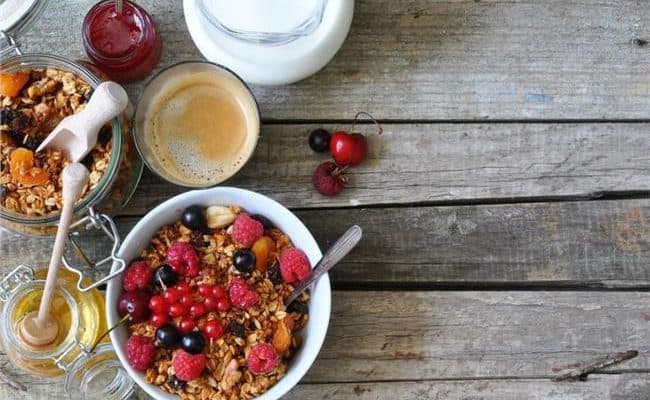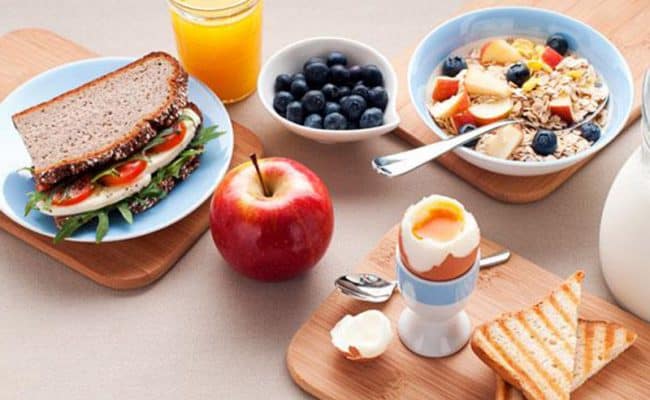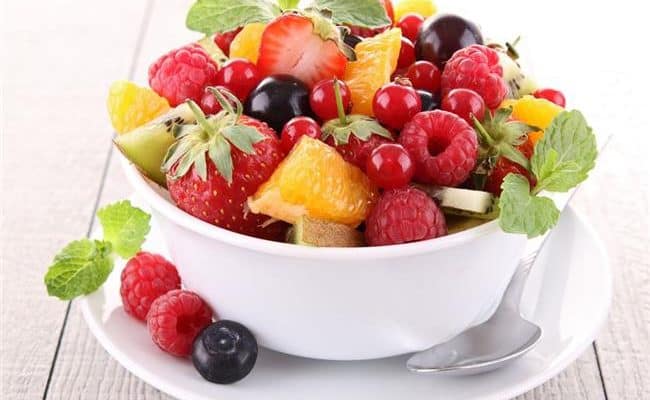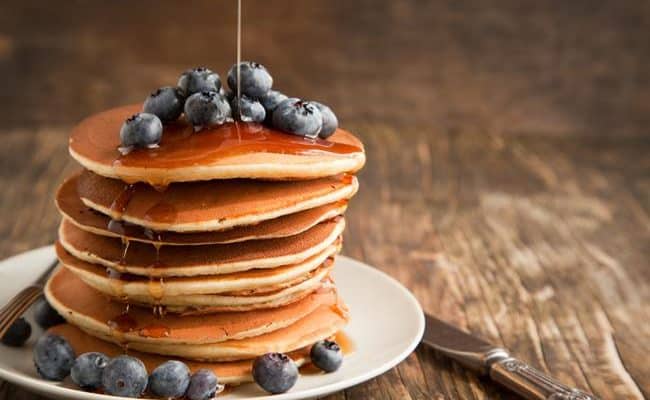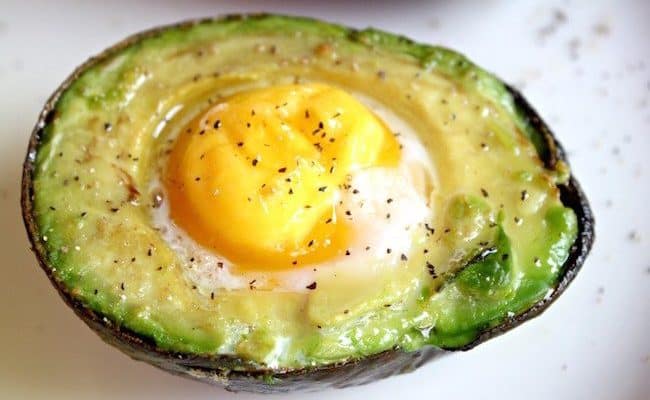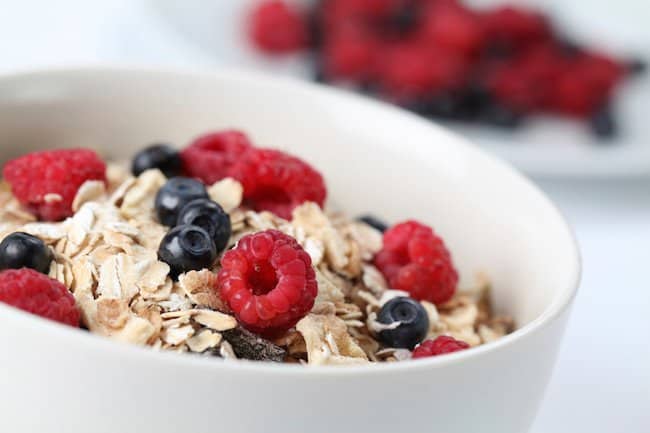
Cereal can fit into a weight loss program, but it’s not going to be the sugary, highly refined cereal you may have had as a child. The best cereals for weight loss are whole grain, high fiber, nutrient dense and all natural. Cereals can be an important source of fiber and help you stay satisfied through the morning.
Getting adequate fiber is important at any time, but during weight loss it can help keep you full and reduce constipation. The fiber can also help lower cholesterol too. A 2010 study from the Journal of the Academy of Nutrition and Dietetics found that, as part of a healthy weight loss diet, eating whole grain cereal helped research participants lower blood cholesterol levels and helped them keep a trim waistline.
Here are other considerations for choosing the best cereal for you during weight loss.
Best Cereals are Low in sugar
Eating a diet low in added sugar should be a health goal for any adult, especially those trying to lose weight. Cutting out extra sugar is a big key for over health and weight loss because added sugar in the diet promotes fat storage.
A lot of breakfast cereals try to sound healthy, they claim to only contain about 100 calories per serving. This sounds like a good advice since it is low in calories, but if it is all sugar, it won’t help your body for weight loss.
Compare the ingredient list and nutrition fact label. Look for sugar added in the ingredient label to see if there is added sugar. Other common names for sugar could be dextrose, high fructose corn syrup or cane sugar. On the nutrition label, sugar should be ideally be just a few grams. Anything more than this may indicate it may not be the best choice.
Caution! Many healthy sounding cereals, like granola, contain a high amount of calories and sugar. Just because a name sounds healthy doesn’t always mean it is in reality!
Good Cereals are High in fiber
This is where cereal can give you a big benefit for weight loss: the fiber content. Hot cereals like oats, quinoa flakes, barley, etc. are whole grains that are very high in fiber. Ready to eat cereals can be high in fiber as well if they are made from a whole grain.
Cereals should provide at least 3 grams of fiber, but preferably more than 5 grams per serving. The fiber will give you a higher satiety meaning it’s more likely to hold you over until lunch.
Healthy Cereals Have Short ingredient list and natural ingredients
Many “diet” foods are short on natural, unprocessed foods and high in preservatives and artificial ingredients. If a cereal has a long list of ingredients that are hard to pronounce, chances are you can find a healthier option in the cereal aisle.
Note that if a cereal has added vitamins and minerals, the ingredient names for these can be long. However, the vitamin or mineral name will usually be next to it in parentheses. These may not be harmful, but other long complicated names may be an indication that it’s not a natural ingredient and may not help your body during weight loss.
Just because a food box has the word “diet” or “healthy” doesn’t mean the ingredients are completely natural. In fact, the word natural does not even have a standard definition on food packaging.
High fiber gluten free options
If you are eating gluten free, there are now many gluten free options for ready to eat cereal. However, gluten free cereals can be lower in fiber and more processed than other wheat based cereals.
Try hot or cold cereals that use quinoa, gluten free oats or brown rice as a base for cereals that will be higher in fiber. Some gluten free brands are even starting to use beans as an alternative base for cereal!
Pair with other nutrient dense foods
Even if you are eating a natural, high fiber cereal in the morning, pair it with some fruit, healthy fat and protein source for the optimally balanced meal. There is research to suggest the benefit of having protein in the morning, and pairing the cereal with some milk can boost your protein intake. Adding in some nut butter with cereal can add protein and a healthy fat source. Topping cereal with some fruit can boost the fiber amount and give you a dose of antioxidants.
Conclusion
Eating cereal can be part of a healthy, balanced meal plan when you are trying to lose weight; you just have to know what to look for. Choose cold or hot cereals that are minimally processed, short ingredient lists, have at least 3-5 grams of fiber per serving and don’t have added sugars.
As with most foods in weight loss, another important consideration with cereal is portion size. Measure out your portions with cereal; it is easy to over pour. A bowl does not equal one portion of cereal! Add extra bulk by adding fruit, a protein and healthy fat source to balance out the meal.
References used in this article
